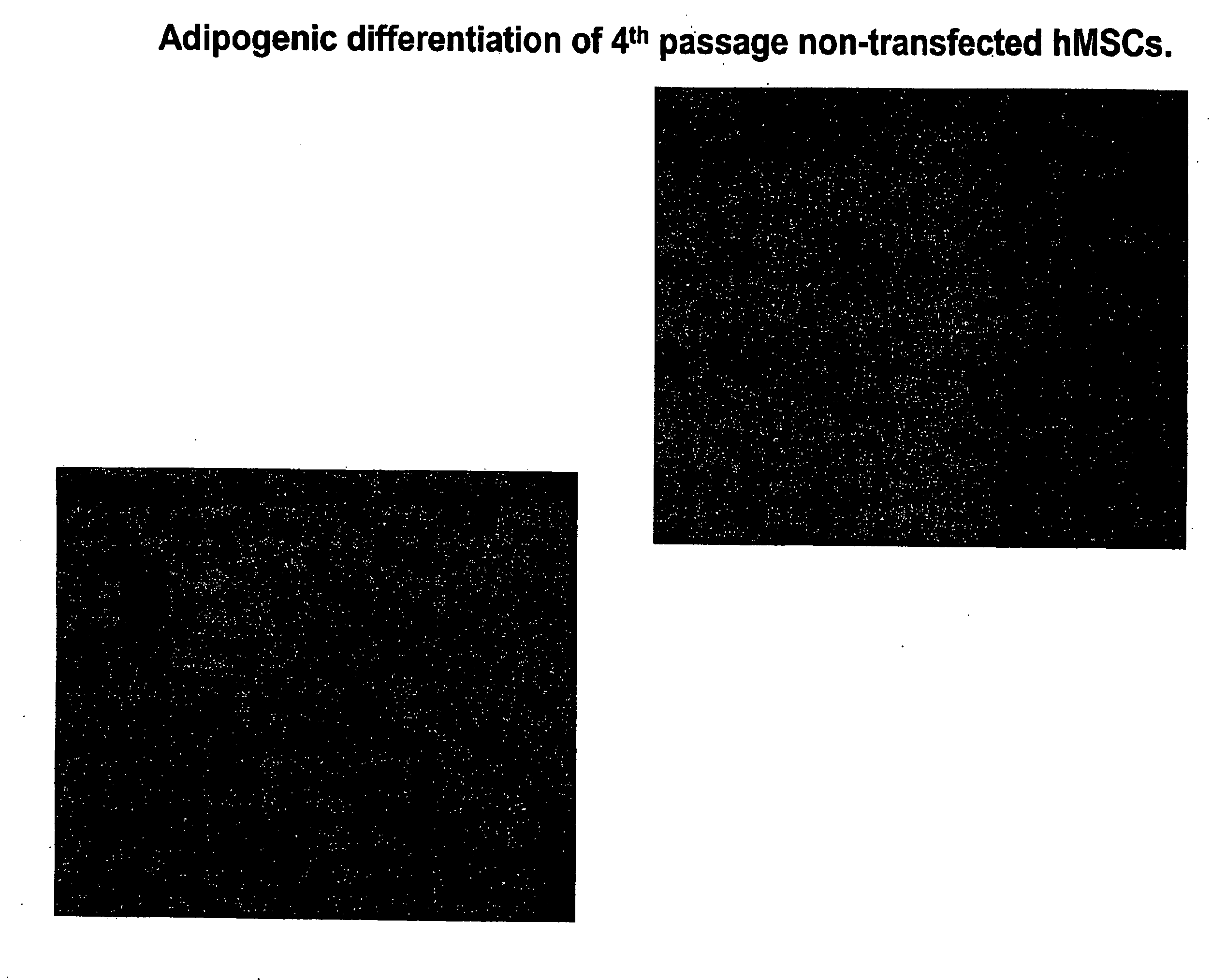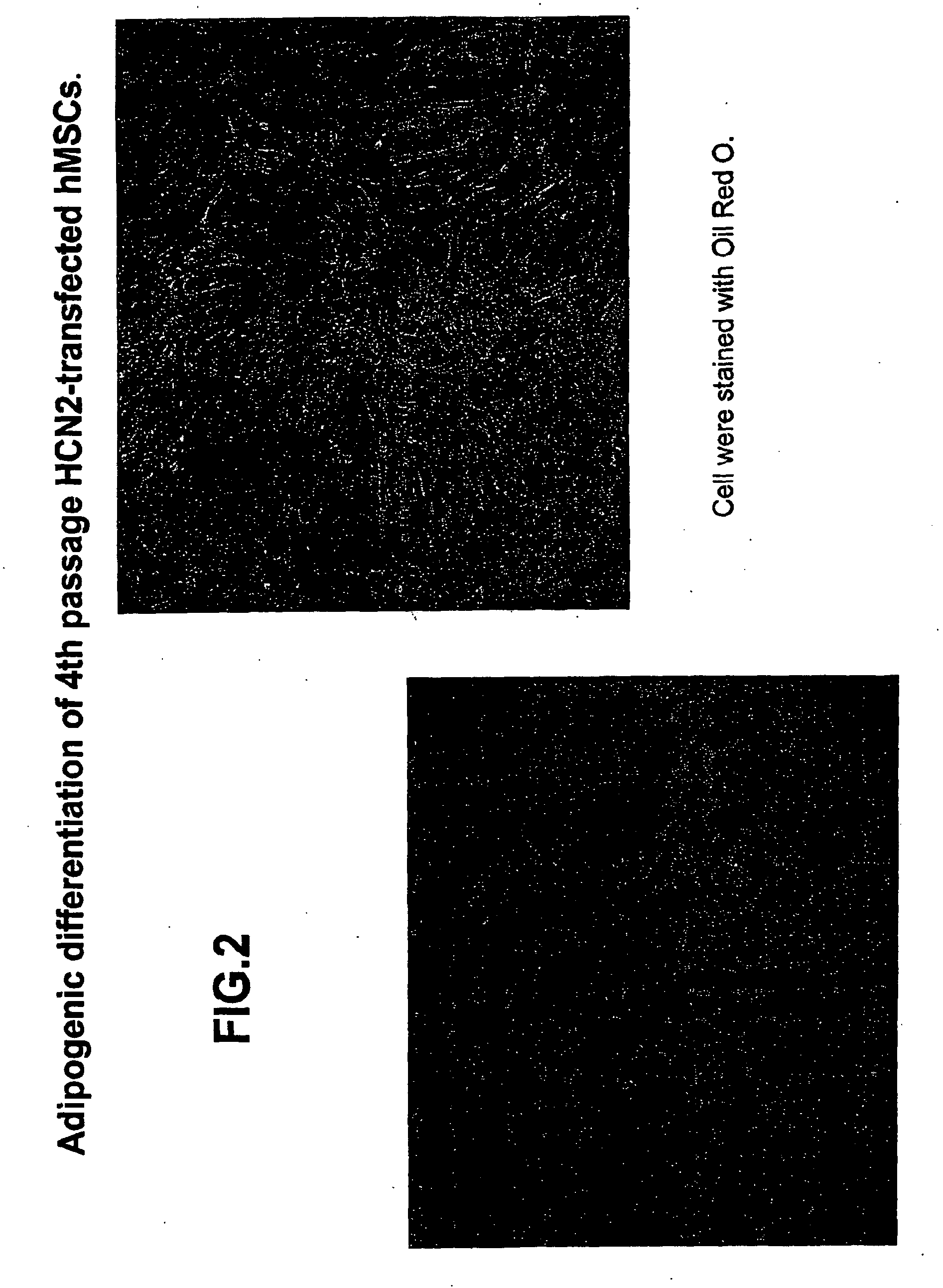Use of late passage mesenchymal stem cells (MSCS) for treatment of cardiac rhythm disorders
a technology of mesenchymal stem cells and cardiac rhythm, which is applied in the direction of genetically modified cells, skeletal/connective tissue cells, therapy, etc., can solve the problems of increasing the gap between the incidence of end-stage heart failure and surgical treatment, the use of such cells is their ability to differentiate into different cell types, and the use of such cells is notoriously progressive. , to achieve the effect of enhancing the safety and efficacy of the cell
- Summary
- Abstract
- Description
- Claims
- Application Information
AI Technical Summary
Benefits of technology
Problems solved by technology
Method used
Image
Examples
example
Biological Features of Late Passage Mesenchymal Stem Cells
[0109]Experiments were performed to determine the biological features of late passage MSCs. hMSCs were purchased and thawed, subcultured and maintained according to the supplier's directions (Cambrex Corporation.). As demonstrated in FIG. 1, fat vacuoles are observed in 4th passage hMSCs exposed to adipogenic differentiation using a purchased kit and the manufacturer's directions (see instructions for adipogenic assay procedure from Cambrex Corporation). In 4th passage hSCs first transfected with the PIRES-HCN2 plasmid followed by exposure to adipogenic differentiation, fewer cells with fat vacuoles were observed, but staining with oil red O still demonstrates a significant number of positive (red) cells (FIG. 2). See instructions for oil red O staining for in vitro adipogenesis from Cambrex Corporation. In contrast, minimal adipogenic differentiation of 9th passage non-transfected hMSCs is demonstrated by the presence of few...
PUM
| Property | Measurement | Unit |
|---|---|---|
| disorder | aaaaa | aaaaa |
| compositions | aaaaa | aaaaa |
| stability | aaaaa | aaaaa |
Abstract
Description
Claims
Application Information
 Login to View More
Login to View More - R&D
- Intellectual Property
- Life Sciences
- Materials
- Tech Scout
- Unparalleled Data Quality
- Higher Quality Content
- 60% Fewer Hallucinations
Browse by: Latest US Patents, China's latest patents, Technical Efficacy Thesaurus, Application Domain, Technology Topic, Popular Technical Reports.
© 2025 PatSnap. All rights reserved.Legal|Privacy policy|Modern Slavery Act Transparency Statement|Sitemap|About US| Contact US: help@patsnap.com



